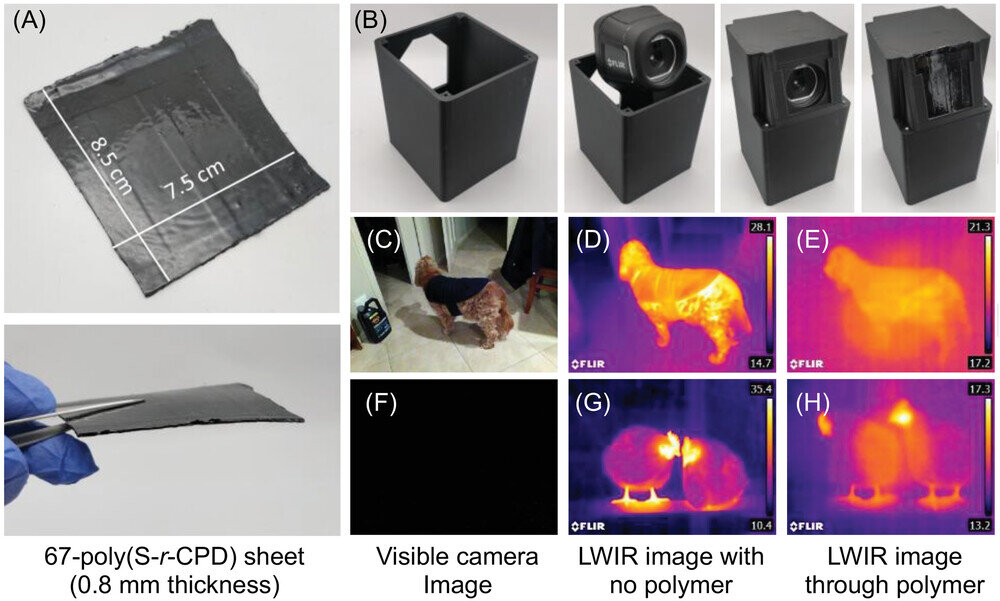Flinders University researchers have discovered a new low-cost material that can be made into lenses for thermal imaging. The high cost of materials required for thermal and infrared imaging has been a significant limiting factor for many industries, including defense, security and surveillance, medicine, electrical engineering, space exploration, and autonomous vehicle operation. Lower cost alternatives are needed to expand the use of thermal imaging to new industries, and the researchers at Flinders University have developed a solution in a new polymer material made from sulfur and cyclopentadiene.
The New Low-Cost Material
The multi-disciplinary team in chemistry and physics at Flinders University developed high-performance polymers that have the unique ability to transmit infrared light. The material combines high performance, low cost, and efficient manufacturing, making it a cost-effective alternative to the expensive germanium or chalcogenide lenses currently used for thermal imaging. Sulfur and cyclopentadiene are both low-cost materials produced in petroleum refining, and the polymer made from these materials can be molded into a variety of lenses.
Potential Applications
The novel material has a wide array of potential applications, from space engineering to military operation, civil and aerospace industries, and wildlife surveillance. The polymer lenses can be used to magnify the image in a thermal camera, and the black polymer can also be used to conceal and protect thermal imaging equipment. The polymer can be used as camouflage to hide a camera used for surveillance. The infrared light passes through the polymer, so one can see through it using an infrared camera, making it useful for defense operations and wildlife surveillance.
Scientific Advances
The study reported some key scientific advances, including a new reactor that was designed to enable the key reaction. A key challenge was to be able to use the building blocks in gaseous form, which was previously thought not to be possible by other researchers in the area. The study also includes quantum mechanical calculations to understand how and why the material is transparent to infrared light used in thermal imaging. These insights will be useful in the future to design new lenses with further improved properties.
The new low-cost material discovered by Flinders University researchers has the potential to expand the use of thermal imaging to new industries that were previously limited by the high cost of germanium or chalcogenide lenses. The material combines high performance, low cost, and efficient manufacturing, making it a cost-effective alternative to the expensive materials currently used for thermal imaging. The potential applications of the novel material are vast, making it a significant breakthrough for many industries, and the scientific advances made by the study will be useful in the future to design new lenses with further improved properties.


Leave a Reply